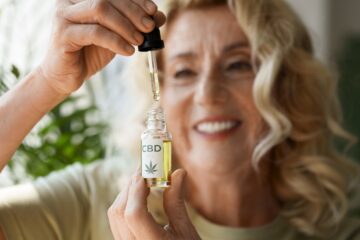Nail fungus, medically known as onychomycosis, is a common condition affecting millions worldwide. Characterized by thickened, discolored, and brittle nails, it can be both unsightly and uncomfortable. Understanding what causes nail fungus is essential for prevention and treatment. This article delves into the various factors that contribute to the development of nail fungus, exploring the biological, environmental, and lifestyle influences that make individuals susceptible to this persistent infection.

The Biology of Nail Fungus
Nail fungus is primarily caused by dermatophytes, a group of fungi that thrive on keratin, the protein that makes up nails and skin. However, yeasts and non-dermatophyte molds can also be culprits. The infection typically begins when these microorganisms enter the nail through small cracks or cuts. Once inside, they proliferate in the warm, moist environment provided by the nail bed.
Dermatophytes
The most common dermatophyte responsible for nail fungus is Trichophyton rubrum. This organism is particularly adept at invading keratinized tissues and can spread from the skin to the nails. Other dermatophytes, such as Trichophyton interdigitale and Epidermophyton floccosum, can also cause nail infections, though they are less prevalent.
Yeasts and Molds
Candida, a type of yeast, is another frequent cause of nail fungus, particularly in fingernails. Non-dermatophyte molds, such as Aspergillus and Scopulariopsis, can also infect nails, especially in people with preexisting nail conditions or weakened immune systems.
Environmental Factors
Several environmental factors can increase the risk of developing nail fungus. These include humidity, exposure to fungal spores, and poor hygiene practices.
Humidity and Moisture
Fungi thrive in warm, moist environments. Consequently, individuals who live in humid climates or frequently engage in activities that keep their feet or hands wet are at a higher risk. Wearing damp socks or shoes, for instance, creates an ideal breeding ground for fungi.
Exposure to Fungal Spores
Public spaces such as swimming pools, locker rooms, and communal showers are common sources of fungal spores. Walking barefoot in these areas can lead to fungal infections as the spores easily adhere to the skin and nails.
Poor Hygiene
Inadequate hygiene practices, such as not washing feet regularly or failing to dry them thoroughly, can also contribute to nail fungus. Wearing the same socks or shoes for extended periods without allowing them to dry can further exacerbate the risk.
Lifestyle and Personal Habits
Certain lifestyle choices and personal habits can significantly influence the likelihood of developing nail fungus.
Footwear Choices
Wearing tight, non-breathable shoes creates a warm, moist environment conducive to fungal growth. High heels and shoes made of synthetic materials, which restrict air circulation, are common offenders. Additionally, sharing shoes or socks can facilitate the spread of fungi.
Nail Care Practices
Improper nail care, such as cutting nails too short or injuring the nail bed, can provide an entry point for fungi. Frequent use of nail polish and artificial nails can also trap moisture and promote fungal growth.
Medical Conditions and Treatments
Various medical conditions and treatments can predispose individuals to nail fungus.
Diabetes
People with diabetes are more susceptible to infections, including nail fungus. High blood sugar levels can weaken the immune system, impair circulation, and cause nerve damage, making it harder for the body to fight off fungal infections.
Immune System Disorders
Individuals with compromised immune systems, such as those with HIV/AIDS or undergoing chemotherapy, are at a higher risk of developing nail fungus. The body’s reduced ability to combat infections makes it easier for fungi to take hold.
Peripheral Arterial Disease
This condition, which affects blood flow to the extremities, can lead to decreased oxygen and nutrient delivery to the nails, making them more vulnerable to fungal infections.
Genetic Predisposition
Genetics can also play a role in the susceptibility to nail fungus. Studies have shown that certain genetic factors may influence the likelihood of developing fungal infections. For example, individuals with a family history of nail fungus may be more prone to the condition.
Occupational Hazards
Certain professions expose individuals to conditions that increase the risk of nail fungus.
Healthcare Workers
Healthcare workers are frequently exposed to various pathogens, including fungi. Prolonged use of gloves, which creates a moist environment, can also contribute to the development of nail fungus.
Athletes
Athletes, particularly swimmers and runners, are at an increased risk due to their exposure to communal showers and constant sweating. Tight-fitting athletic footwear can further exacerbate the issue.
Age and Gender
Age and gender can also influence the likelihood of developing nail fungus.
Age
Nail fungus is more common in older adults. As people age, their nails grow more slowly and thicken, which can make them more susceptible to infection. Additionally, age-related decline in blood circulation and a weakened immune system can contribute to the risk.
Gender
Men are generally more likely to develop nail fungus than women. However, women who frequently use nail polish or artificial nails are also at an increased risk.
Preventive Measures for what Causes Nail Fungus
Understanding the causes of nail fungus can help in taking preventive measures to reduce the risk of infection.
Proper Hygiene
Maintaining good hygiene is crucial in preventing nail fungus. Washing feet regularly, drying them thoroughly, and changing socks and shoes frequently can help keep fungi at bay. Using antifungal powders or sprays can also be beneficial.
Appropriate Footwear
Wearing breathable, well-fitted shoes made of natural materials can help prevent fungal infections. It’s also important to alternate shoes to allow them to dry completely between uses.
Nail Care
Proper nail care, including trimming nails straight across and avoiding cutting them too short, can prevent damage to the nail bed and reduce the risk of infection. Avoiding the use of artificial nails and limiting the use of nail polish can also help.
Protective Measures in Public Spaces
Wearing protective footwear in communal areas, such as showers and locker rooms, can reduce the risk of exposure to fungal spores. It’s also advisable to avoid sharing personal items like towels, socks, and shoes.
Medical Management
Managing underlying medical conditions, such as diabetes, and maintaining a healthy immune system can help prevent nail fungus. Regular check-ups and following prescribed treatments for chronic conditions are essential.
Treatment Options
If nail fungus does develop, various treatment options are available.
Topical Treatments
Over-the-counter and prescription antifungal creams and ointments can be effective for mild cases of nail fungus. These treatments are applied directly to the affected nail and surrounding skin.
Oral Medications
For more severe infections, oral antifungal medications may be necessary. These medications can be more effective but may also have side effects, so they should be used under medical supervision.
Laser Therapy
Laser treatment is a newer option that involves using light energy to destroy the fungus. While this treatment can be effective, it is often expensive and may not be covered by insurance.
Surgical Options
In severe cases where the nail is significantly damaged or causing pain, surgical removal of the nail may be necessary. This allows a new, healthy nail to grow in its place.
Conclusion
Nail fungus is a multifaceted condition with various contributing factors. From biological and environmental influences to lifestyle choices and medical conditions, understanding what causes nail fungus is essential for prevention and effective treatment. By maintaining good hygiene, choosing appropriate footwear, practicing proper nail care, and managing underlying health issues, individuals can significantly reduce their risk of developing nail fungus. For those already affected, a range of treatment options is available to address the infection and restore nail health.


